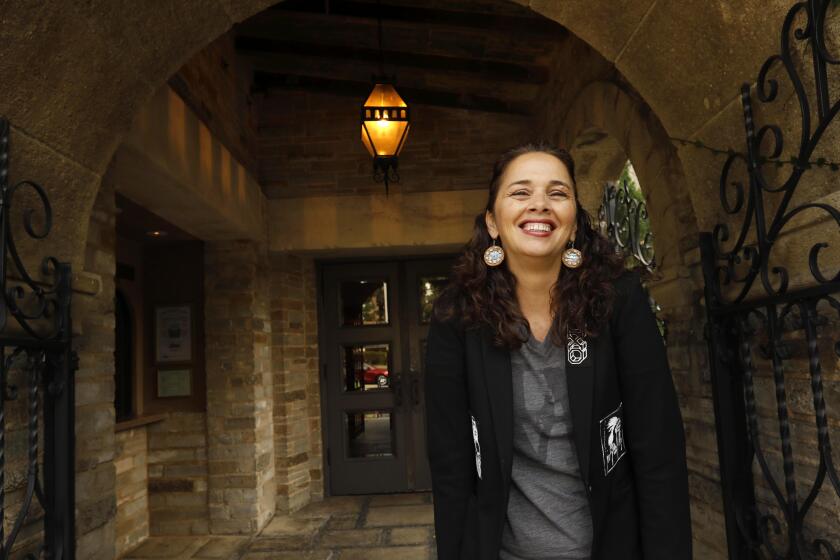An orchestra’s multiplier effect
Swedes -- at least until General Motors took over Saab and Ford, Volvo -- made wonderful cars. We all know about their furniture finesse, however much charm IKEA has lost through ubiquity. Swedish cinema had the great Bergman. ABBA is definitely yesterday, although a new generation of idiosyncratic Swedish rock is on the rise.
One thing the Swedes have been consistently making for the past quarter of a century is star conductors. A number of today’s leading maestros, including Esa-Pekka Salonen, got their first major music directorships in Sweden, where, outside the limelight, they explored repertory and learned a little something about running an orchestra. Alan Gilbert, who steps up to the New York Philharmonic in 2009, is just finishing an eight-year run with the Royal Stockholm Philharmonic. Probably the only place Gustavo Dudamel can hide these days to get some work done is Gothenburg, where he began a three-year stint with the local symphony this season.
Costa Mesa, last week, was little Sweden. Two chamber orchestras with conductors on the rise came to the Renee and Henry Segerstrom Concert Hall. Andrew Manze, in the process of exchanging his acclaimed Baroque violin specialty for a mainstream conducting career, led Beethoven’s “Eroica” Symphony with the Helsingborg Symphony he heads on Wednesday. Arms all akimbo, he has a way to go.
Saturday night was Thomas Dausgaard’s turn with the its first visit to Southern California. Dausgaard is a Dane, 44 years old. The 38-player ensemble is 12 years old. Dausgaard didn’t found it, but he has been its only music director, a position he has held for the last 10 years.
In that decade, he has put it and himself on the map. The orchestra has an enviable record contract with the Swedish BIS label and tours extensively. Despite a certain Danish-Swedish rivalry, success in Stockholm didn’t hurt Dausgaard at home. In 2004, he became principal conductor of the Danish National Symphony.
--
No need to hold back
Unlike, say, the Los Angeles Chamber Orchestra, which has a refined sound, the Swedish Chamber Orchestra is an aggressive band. Saturday’s program did not show its range -- the orchestra has worked extensively with period-practice specialists (including Manze) and does much new and Scandinavian music. Dausgaard brought instead Beethoven and Schumann and did whatever he could to get 38 players to do the job of 88.
One advantage to that approach is that nobody had to hold back, and raw energy was a characteristic of the evening. Dausgaard’s conducting style is physical. The beat is there -- somewhere. But mainly he extracts what he wants from fluid, exaggerated gestures. He is tall, lean, handsome and well tailored and puts on an audience-pleasing show. He has probably never met a dotted note or an accent he didn’t like, which made for a punch-drunk “Coriolan” Overture, the opening work of the evening’s Beethoven first half.
The Polish pianist Piotr Anderszewski was the soloist in Beethoven’s First Piano Concerto, and a lively exchange between pianist and conductor ensued. There is an element of stardust in Anderszewski’s playing. Lean, handsome and even better tailored, he has a way of making the piano sparkle. His is not an eccentric approach -- other than his choice of an obscure Beethoven cadenza in the first movement. The concerto is youthful, Beethoven’s most untroubled, and is supposed to be sparkly. But the sheer fluidity of Anderszewski’s technique and his delight in detail was not just a breath of fresh air but a gust.
--
Schumann’s rude side
Schumann’s Second Symphony played by the small ensemble was, on the other hand, eccentric. This is big music meant to make a big sound. Some conductors have reorchestrated Schumann to thin the clot, and Mahler made versions of the symphonies that expand the color palette. Dausgaard, on the other hand, exposed Schumann’s rude side, which is a side we don’t encounter very often.
He didn’t politely blend. Horns bleated. Winds were acidic. Strings were tough and wiry. Cellos and basses were few, so they dug in with all their might to provide a harmonic foundation. Edges were viciously sharp, except when they weren’t, such as in the Scherzo. That movement was so soft-edged that it threatened to become mushy, but for Dausgaard’s slightly mad pushing tempos around.
The slow movement sounded emaciated, but the rest of the symphony was gripping and powerful. Dausgaard’s attitude toward a small orchestra is that it is the musical equivalent of a sports car and that’s how it should be driven.
--
mark.swed@latimes.com
More to Read
The biggest entertainment stories
Get our big stories about Hollywood, film, television, music, arts, culture and more right in your inbox as soon as they publish.
You may occasionally receive promotional content from the Los Angeles Times.







